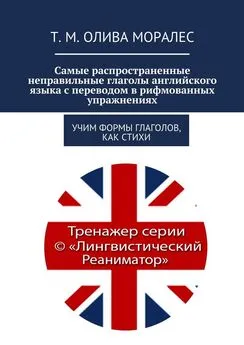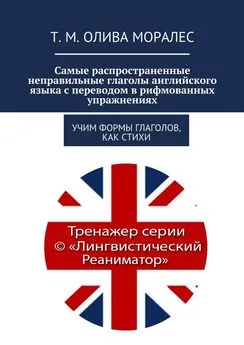неизвестен Автор - Как самому сделать атомную бомбу (на английском языке)
- Название:Как самому сделать атомную бомбу (на английском языке)
- Автор:
- Жанр:
- Издательство:неизвестно
- Год:неизвестен
- ISBN:нет данных
- Рейтинг:
- Избранное:Добавить в избранное
-
Отзывы:
-
Ваша оценка:
неизвестен Автор - Как самому сделать атомную бомбу (на английском языке) краткое содержание
Как самому сделать атомную бомбу (на английском языке) - читать онлайн бесплатно полную версию (весь текст целиком)
Интервал:
Закладка:
The high cost of these radar-type altimeters has prevented their use in commercial applications, but the decreasing cost of electronic components should make them competitive with barometric types before too long.
Air Pressure Detonator
---------------------
The air pressure detonator can be a very complex mechanism, but for all practical purposes, a simpler model can be used. At high altitudes, the air is of lesser pressure. As the altitude drops, the air pressure increases. A simple piece of very thin magnetized metal can be used as an air pressure detonator. All that is needed is for the strip of metal to have a bubble of extremely thin metal forged in the center and have it placed directly underneath the electrical contact which will trigger the conventional explosive detonation. Before setting the strip in place, push the bubble in so that it will be inverted.
Once the air pressure has achieved the desired level, the magnetic bubble will snap back into its original position and strike the contact, thus completing the circuit and setting off the explosive(s).
Detonating Head
--------------
The detonating head (or heads, depending on whether a Uranium or Plutonium bomb is being used as a model) that is seated in the conventional explosive charge(s) is similar to the standard-issue blasting cap. It merely serves as a catalyst to bring about a greater explosion. Calibration of this device is essential. Too small of a detonating head will only cause a colossal dud that will be doubly dangerous since someone's got to disarm and re-fit the bomb with another detonating head. (an added measure of discomfort comes from the knowledge that the conventional explosive may have detonated with insufficient force to weld the radioactive metals. This will cause a supercritical mass that could go off at any time.) The detonating head will receive an electric charge from the either the air pressure detonator or the radar altimeter's coordinating detonator, depending on what type of system is used. The Du Pont company makes rather excellent blasting caps that can be easily modified to suit the required specifications.
Conventional Explosive Charge(s)
-------------------------------
This explosive is used to introduce (and weld) the lesser amount of Uranium to the greater amount within the bomb's housing. [The amount of pressure needed to bring this about is unknown and possibly classified by the United States Government for reasons of National Security]
Plastic explosives work best in this situation since they can be manipulated to enable both a Uranium bomb and a Plutonium bomb to detonate. One very good explosive is Urea Nitrate. The directions on how to make Urea Nitrate are as follows:
- Ingredients
--------------
[1] 1 cup concentrated solution of uric acid (C5 H4 N4 O3)
[2] 1/3 cup of nitric acid
[3] 4 heat-resistant glass containers
[4] 4 filters (coffee filters will do)
Filter the concentrated solution of uric acid through a filter to remove impurities. Slowly add 1/3 cup of nitric acid to the solution and let the mixture stand for 1 hour. Filter again as before. This time the Urea Nitrate crystals will collect on the filter. Wash the crystals by pouring water over them while they are in the filter. Remove the crystals from the filter and allow 16 hours for them to dry. This explosive will need a blasting cap to detonate.
It may be necessary to make a quantity larger than the aforementioned list calls for to bring about an explosion great enough to cause the Uranium (or Plutonium) sections to weld together on impact.
Neutron Deflector
----------------
The neutron deflector is comprised solely of Uranium-238. Not only is U-238 non-fissionable, it also has the unique ability to reflect neutrons back to their source.
The U-238 neutron deflector can serve 2 purposes. In a Uranium bomb, the neutron deflector serves as a safeguard to keep an accidental supercritical mass from occurring by bouncing the stray neutrons from the `bullet' counterpart of the Uranium mass away from the greater mass below it (and viceversa). The neutron deflector in a Plutonium bomb actually helps the wedges of Plutonium retain their neutrons by `reflecting' the stray particles back into the center of the assembly. [See diagram in Section 4 of this file.]
Uranium & Plutonium
------------------
Uranium-235 is very difficult to extract. In fact, for every 25,000 tons of Uranium ore that is mined from the earth, only 50 tons of Uranium metal can be refined from that, and 99.3% of that metal is U-238 which is too stable to be used as an active agent in an atomic detonation. To make matters even more complicated, no ordinary chemical extraction can separate the two isotopes since both U-235 and U-238 possess precisely identical chemical characteristics. The only methods that can effectively separate U-235 from U-238 are mechanical methods.
U-235 is slightly, but only slightly, lighter than its counterpart, U-238. A system of gaseous diffusion is used to begin the separating process between the two isotopes. In this system, Uranium is combined with fluorine to form Uranium Hexafluoride gas. This mixture is then propelled by lowpressure pumps through a series of extremely fine porous barriers. Because the U-235 atoms are lighter and thus propelled faster than the U-238 atoms, they could penetrate the barriers more rapidly. As a result, the U-235's concentration became successively greater as it passed through each barrier. After passing through several thousand barriers, the Uranium Hexafluoride contains a relatively high concentration of U-235 -- 2% pure Uranium in the case of reactor fuel, and if pushed further could (theoretically) yield up to 95% pure Uranium for use in an atomic bomb.
Once the process of gaseous diffusion is finished, the Uranium must be refined once again. Magnetic separation of the extract from the previous enriching process is then implemented to further refine the Uranium. This involves electrically charging Uranium Tetrachloride gas and directing it past a weak electromagnet. Since the lighter U-235 particles in the gas stream are less affected by the magnetic pull, they can be gradually separated from the flow.
Following the first two procedures, a third enrichment process is then applied to the extract from the second process. In this procedure, a gas centrifuge is brought into action to further separate the lighter U-235 from its heavier counter-isotope. Centrifugal force separates the two isotopes of Uranium by their mass. Once all of these procedures have been completed, all that need be done is to place the properly molded components of Uranium-235 inside a warhead that will facilitate an atomic detonation.
Supercritical mass for Uranium-235 is defined as 110 lbs (50 kgs) of pure Uranium.
Depending on the refining process(es) used when purifying the U-235 for use, along with the design of the warhead mechanism and the altitude at which it detonates, the explosive force of the A-bomb can range anywhere from 1 kiloton (which equals 1,000 tons of TNT) to 20 megatons (which equals 20 million tons of TNT -- which, by the way, is the smallest strategic nuclear warhead we possess today. {Point in fact -- One Trident Nuclear Submarine carries as much destructive power as 25 World War II's}).
While Uranium is an ideally fissionable material, it is not the only one. Plutonium can be used in an atomic bomb as well. By leaving U-238 inside an atomic reactor for an extended period of time, the U-238 picks up extra particles (neutrons especially) and gradually is transformed into the element Plutonium.
Plutonium is fissionable, but not as easily fissionable as Uranium. While Uranium can be detonated by a simple 2-part gun-type device, Plutonium must be detonated by a more complex 32-part implosion chamber along with a stronger conventional explosive, a greater striking velocity and a simultaneous triggering mechanism for the conventional explosive packs. Along with all of these requirements comes the additional task of introducing a fine mixture of Beryllium and Polonium to this metal while all of these actions are occurring.
Supercritical mass for Plutonium is defined as 35.2 lbs (16 kgs). This amount needed for a supercritical mass can be reduced to a smaller quantity of 22 lbs (10 kgs) by surrounding the Plutonium with a U-238 casing.
To illustrate the vast difference between a Uranium gun-type detonator and a Plutonium implosion detonator, here is a quick rundown.
============================================================================
[1] Uranium Detonator
----------------
Comprised of 2 parts. Larger mass is spherical and concave.
Smaller mass is precisely the size and shape of the `missing'
section of the larger mass. Upon detonation of conventional
explosive, the smaller mass is violently injected and welded
to the larger mass. Supercritical mass is reached, chain
reaction follows in one millionth of a second.
[2] Plutonium Detonator
------------------
Comprised of 32 individual 45-degree pie-shaped sections of
Plutonium surrounding a Beryllium/Polonium mixture. These 32
sections together form a sphere. All of these sections must
have the precisely equal mass (and shape) of the others. The
shape of the detonator resembles a soccerball. Upon detonation
of conventional explosives, all 32 sections must merge with the
B/P mixture within 1 ten-millionths of a second.
=== Cut ===
С yважением, MeteO
--- GoldED 3.00.Beta3+ * Origin: Мой адpес не дом и не yлица, мой адpес (2:5020/1376.43)
____________________________________________________________________________
- Diagram
------------ ____________________________________________________________________________
|
[Uranium Detonator] | [Plutonium Detonator] ______________________________________|_____________________________________
_____ |
| :| | . [2] .
| :| | . ~ \_/ ~ .
| [2]:| | .. . ..
| :| | [2]| . |[2]
| .:| | . ~~~ . . . ~~~ .
`...::' | . . . . .
_ ~~~ _ | . . ~ . .
. `| |':.. | [2]\. . . . [1] . . . ./[2]
. | | `:::. | ./ . ~~~ . \.
| | `::: | . . : . .
. | | :::: | . . . . .
| [1] | ::|:: | . ___ . ___ .
. `. .' ,::||: | [2]| . |[2]
~~~ ::|||: | .' _ `.
.. [2] .::|||:' | . / \ .
::... ..::||||:' | ~ -[2]- ~
:::::::::::::||||::' |
``::::||||||||:'' |
``:::::'' |
|
|
|
|
[1] = Collision Point | [1] = Collision Point
[2] - Uranium Section(s) | [2] = Plutonium Section(s)
|
| ______________________________________|_____________________________________ ============================================================================
Lead Shield
----------
The lead shield's only purpose is to prevent the inherent radioactivity of the bomb's payload from interfering with the other mechanisms of the bomb. The neutron flux of the bomb's payload is strong enough to short circuit the internal circuitry and cause an accidental or premature detonation.
Fuses
----
The fuses are implemented as another safeguard to prevent an accidental detonation of both the conventional explosives and the nuclear payload. These fuses are set near the surface of the `nose' of the bomb so that they can be installed easily when the bomb is ready to be launched. The fuses should be installed only shortly before the bomb is launched. To affix them before it is time could result in an accident of catastrophic proportions.
============================================================================
Читать дальшеИнтервал:
Закладка:


